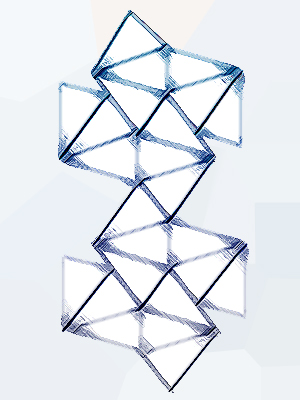Here we build the future of medicine – layer by layer

We investigate physical and digital 3D modeling and engineering for improving patient care. We develop implants and prostheses that adapt to the patient's anatomy and surrounding tissue function. We improve planning and tools for minimally invasive procedures. We engineer micro and nanomanufactured tissues with mechanobiology in focus. We enhance medical imaging with anthropomorphic phantoms. We create training tools for the doctors of the future. We enjoy this research a lot, its dynamism, its interdisciplinary approaches, its challenges.
Research Area
Principal Investigator
Francesco Moscato
P +43 (0)1 40400-39830
Deputy Principal Investigator
Ewald Unger
P +43 (0)1 40400-19890
Members
- Daniel Aigner
- Marco Blendow
- Matilde Cassasa
- Barbara Eckart
- Beatrice Ferrante
- Martin Frank
- Camilla Ghiaieddu
- Leon Konstantin Handermann
- Nikolaus Irnstorfer
- Jan Kubsch
- Preranut Laothanasin
- Markus Lisy
- David Mutschlechner
- Matteo Maria Ottaviani
- Sebastiano Panfili
- Lea Plunger
- Stefan Reininger
- Maria Riviello
- Eleonora Sella Bart
- Margherita Sironi
- Felix Spörl
- Elettra Verrina
- Jose Manuel Villarejo Ramos
- Matthias Vostatek
- Sophie Zagiczek
- OPTIFLOW-3D (2022) Austrian Research Promotion Agency (FFG), Production of the Future Program
- INKplant (2019) Austrian Research Promotion Agency (FFG), Production of the Future Program
- VAD-PLAN-3D (2019) Medtronic, External Research Program
- NeuHeart (2018) EU Horizon-2020, FET Proactive Program
- M3dRES (2017) Austrian Research Promotion Agency (FFG), R&D Infrastructure Funding Program
Selected peer-reviewed publications
-
Aigner, Philipp et al., 2023. Quantification of paravalvular leaks associated with TAVI implants using 4D MRI in an aortic root phantom made possible by the use of 3D printing, Frontiers in Cardiovascular Medicine, 10, art. no. 1083300.
-
Franco-Martínez, Francisco, et al., 2022. Hybrid design and prototyping of metamaterials and metasurfaces, Virtual and Physical Prototyping, 17 (4), pp. 1031-1046.
- Russo, Marco, et al., 2020. Advanced three-dimensionally engineered simulation model for aortic valve and proximal aorta procedures. Interact CardioVasc Thorac Surg. 30(6), pp. 887-895.
- Stoiber, Martin, et. al., 2020. Impact of the testing protocol on the mechanical characterization of small diameter electrospun vascular grafts. J Mech Behav Biomed Mater. 104:103652.
- Oberoi, Gunpreet, et al. 2019. Titanium dioxide-based scanning powder can modulate cell activity of oral soft tissue - Insights from in vitro studies with L929 cells and periodontal fibroblasts. Journal of Prosthodontic Research 64(1).
- Sella Bart, Eleonora / Panfili, Sebastiano "4Dflow quantification of paravalvular leaks in TAVIs on 3D-printed phantoms" Politecnico di Milano (Italy), 2021
- Sironi, Margherita "Design and realization of a brain phantom for the planning and training of neurosurgical operations" Politecnico di Milano (Italy), 2021
- Handermann, Leon Konstantin "Einfluss von MED610, Vero PureWhite und VeroClear auf die Vitalität oraler Fibroblasten sowie L-929 Zellen" Medical University of Vienna, 2020.
- Mutschlechner, David “Evaluierung der intrakardialen Position von Herzunterstützungssystemen durch Analyse und 3D-Rekonstruktion von kardiovaskulären CT-Bildern“, Medical University of Innsbruck, 2019.
- Irnsdorfer, Nikolaus, “Gedruckte 3D Phantome für die digitale Radiographie“, MSc Thesis, Vienna University of Technology, 2019.
- Plunger, Lea, “Einfluss der intraventrikulären Position von Left Ventricular Assist Devices auf die Entstehung von Pumpenthromben - Quantifizierung mittels klinischer Bildgebung“, Medical University of Vienna, 2019.
- Königshofer, Markus, “Mechanical and Dimensional Characterisation of Multi-Material Additive Manufactured Parts”, FH-Technikum Wien, 2018.


